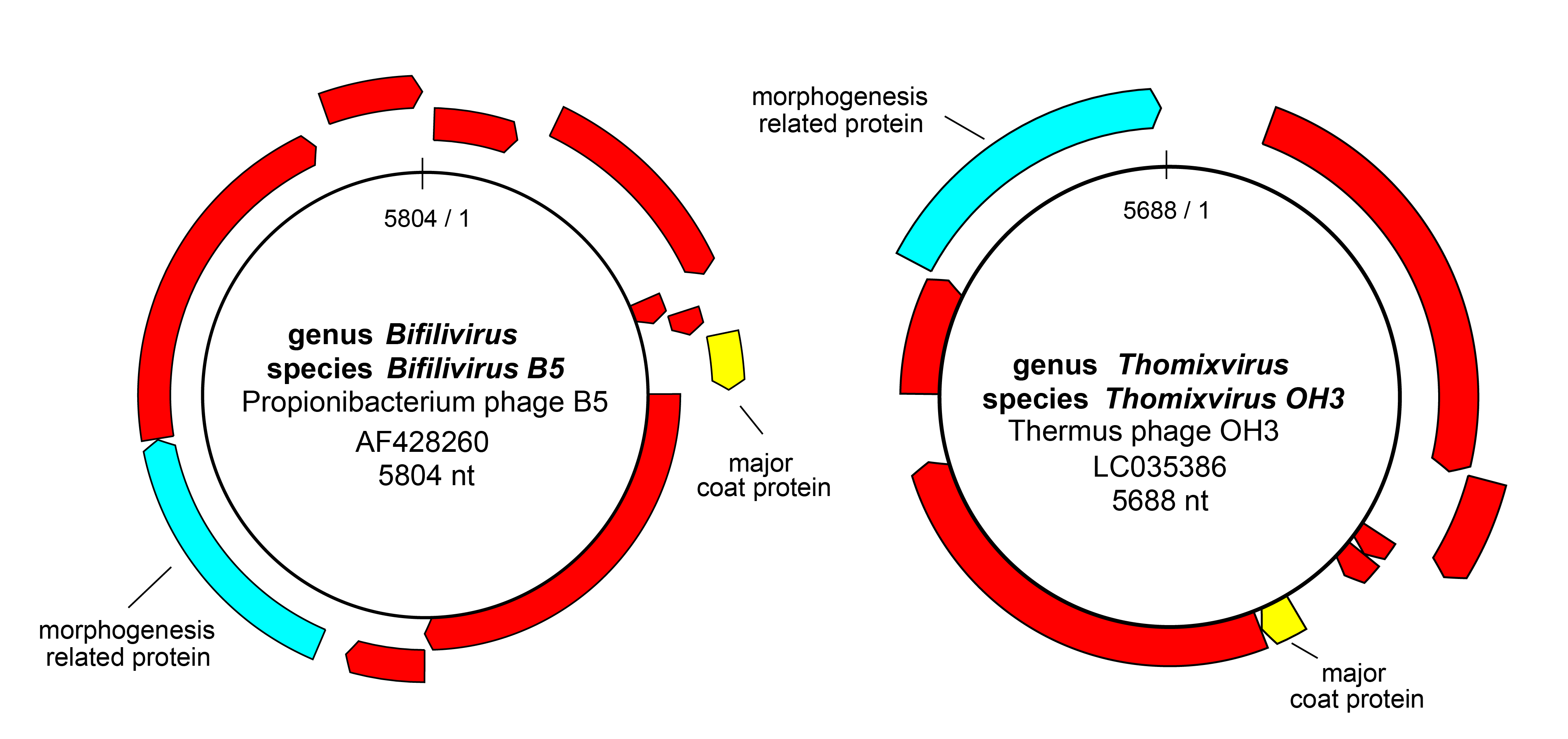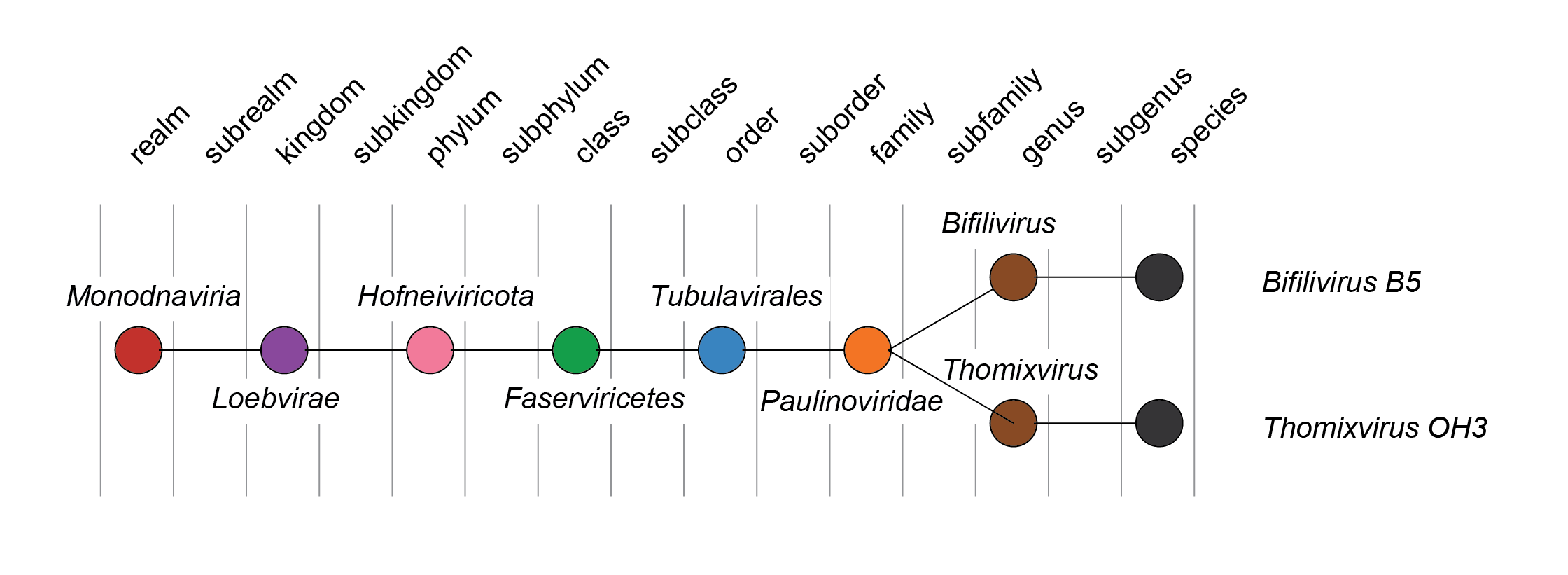Family: Paulinoviridae (Interim Report)
This is a summary page created by the ICTV Report Editors using information from associated Taxonomic Proposals and the Master Species List.
Edited by: Dann Turner, Petar Knezevic and Mart Krupovic
Posted: November 2024
Summary
The family Paulinoviridae includes ssDNA(+) viruses of bacteria (Table 1 Paulinoviridae). The family was established in 2021 (Master Species List #36).
Table 1 Paulinoviridae. Characteristics of members of the family Paulinoviridae.
| Characteristic | Description |
| Example | Propionibacterium phage B5 (AF428260), species Bifilivirus B5, genus Bifilivirus |
| Virion | Non-enveloped, flexible filaments with a diameter of 7–12 nm and a length of 620–830 nm |
| Genome | Circular ssDNA(+) of 5.6–5.9 kb, encoding 8–10 proteins |
| Replication | Rolling circle mechanism |
| Translation | From mRNAs |
| Host range | Bacteria; Actinomycetes and Deinococci |
| Taxonomy | Realm Monodnaviria, kingdom Loebvirae, phylum Hofneiviricota, class Faserviricetes, order Tubulavirales: 2 genera and 2 species |
 |
| Figure 1 Paulinoviridae. Genome organisation of Propionibacterium phage B5 and Thermus phage OH3, members of the family Paulinoviridae. Boxes indicate open reading frames as annotated on GenBank accessions AF428260 and LC035386, respectively. |
 |
| Figure 2 Paulinoviridae. Relationships of the taxa connected to the family Paulinoviridae. |
Derivation of names
Paulinoviridae: from the Latin paulus, meaning “small”, referring to the shorter genomes and fewer encoded proteins in members of the family compared to viruses of other families within the order Tubulavirales; the suffix -viridae for family taxa
Bifilivirus: from the Latin bifilum, bifili meaning double thread
Thomixvirus: from the Latin thomix, thomicis meaning a cord, string, line, thread

